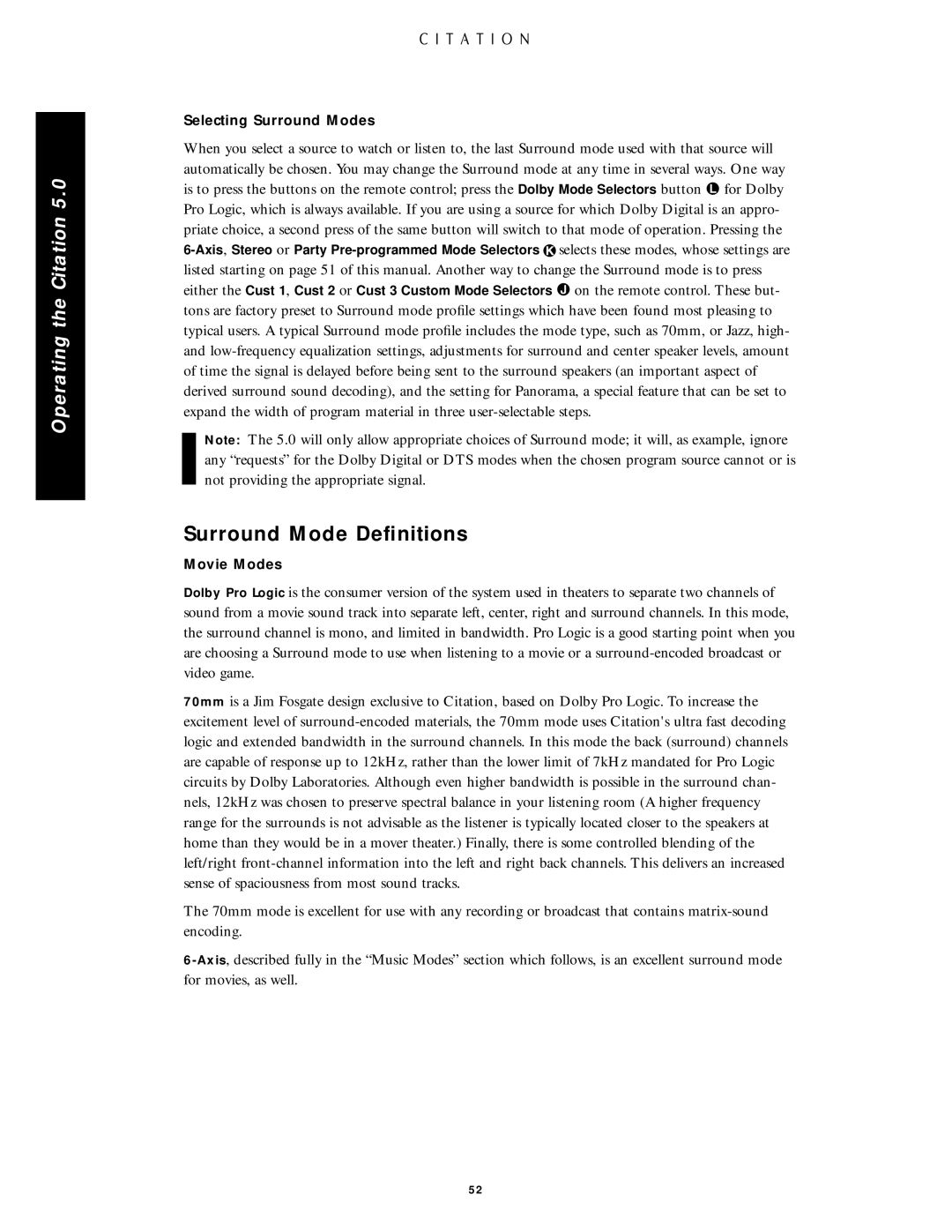
Operating the Citation 5.0
Selecting Surround Modes
When you select a source to watch or listen to, the last Surround mode used with that source will automatically be chosen. You may change the Surround mode at any time in several ways. One way is to press the buttons on the remote control; press the Dolby Mode Selectors button  for Dolby Pro Logic, which is always available. If you are using a source for which Dolby Digital is an appro- priate choice, a second press of the same button will switch to that mode of operation. Pressing the
![]() selects these modes, whose settings are listed starting on page 51 of this manual. Another way to change the Surround mode is to press either the Cust 1, Cust 2 or Cust 3 Custom Mode Selectors Æ on the remote control. These but- tons are factory preset to Surround mode profile settings which have been found most pleasing to typical users. A typical Surround mode profile includes the mode type, such as 70mm, or Jazz, high- and
selects these modes, whose settings are listed starting on page 51 of this manual. Another way to change the Surround mode is to press either the Cust 1, Cust 2 or Cust 3 Custom Mode Selectors Æ on the remote control. These but- tons are factory preset to Surround mode profile settings which have been found most pleasing to typical users. A typical Surround mode profile includes the mode type, such as 70mm, or Jazz, high- and
Note: The 5.0 will only allow appropriate choices of Surround mode; it will, as example, ignore any “requests” for the Dolby Digital or DTS modes when the chosen program source cannot or is not providing the appropriate signal.
Surround Mode Definitions
Movie Modes
Dolby Pro Logic is the consumer version of the system used in theaters to separate two channels of sound from a movie sound track into separate left, center, right and surround channels. In this mode, the surround channel is mono, and limited in bandwidth. Pro Logic is a good starting point when you are choosing a Surround mode to use when listening to a movie or a
70mm is a Jim Fosgate design exclusive to Citation, based on Dolby Pro Logic. To increase the excitement level of
The 70mm mode is excellent for use with any recording or broadcast that contains
52
